Hey everyone
I was looking into adding some powerheads into both of my tanks and am looking for some advice. I am mostly uneducated when it comes to them; my basic understanding is that they can help add aeration and circulation to the tank, which is the reason I'm considering them. I could use some advice if they would be useful for my situation or if there's something better, and also what type/brand/power would be best.
The first tank is my brackish tank. It's a 37g bowfront that houses a Green Spotted Puffer and 10 bumblebee gobies. No live plants. It's currently freshwater but I'm slowly transitioning it to near full marine conditions.
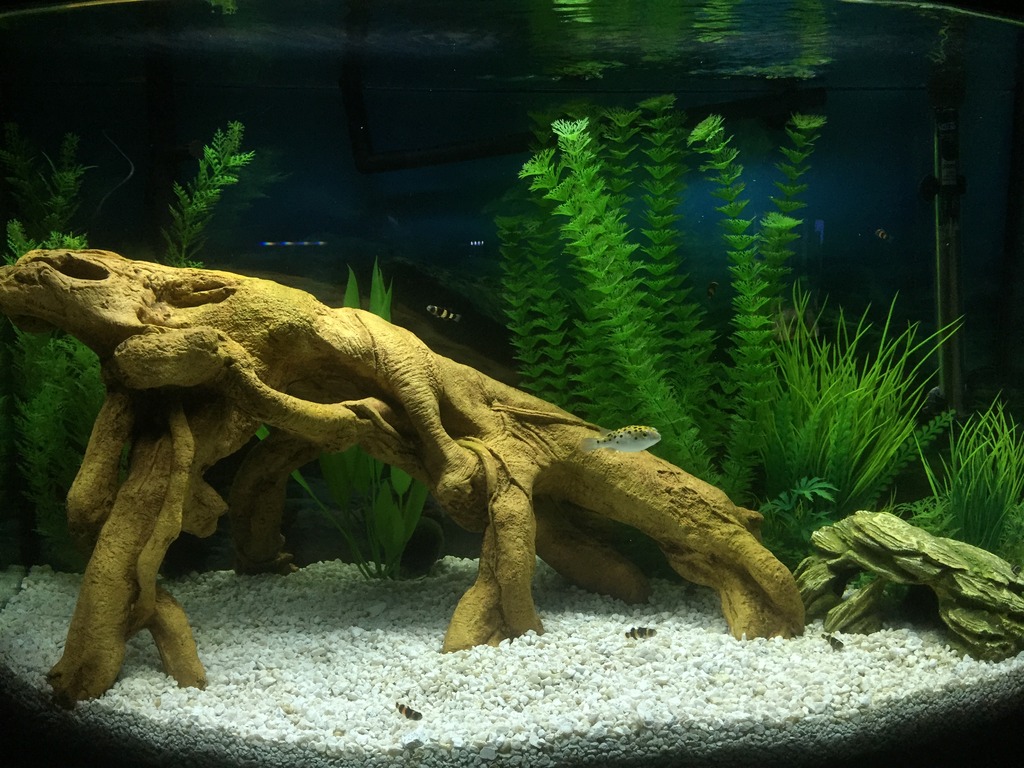
I have it filtered with an Aquatop CF400UV Canister filter, which is rated at 370gph. I have both output valves pointed at the surface to produce surface agitation to pull oxygen into the tank. While the agitation is quite strong on one half of the tank the other half is pretty calm. So I'm concerned that possibly enough oxygen isn't being pulled in. I have no bubblers or other aeration system set up in this tank. I also worry that since both outputs are pointed towards the surface that the bottom portion of the tank is not getting circulation. I notice when I feed bloodworms they tend to just float straight to the substrate and sit there until their pecked off.
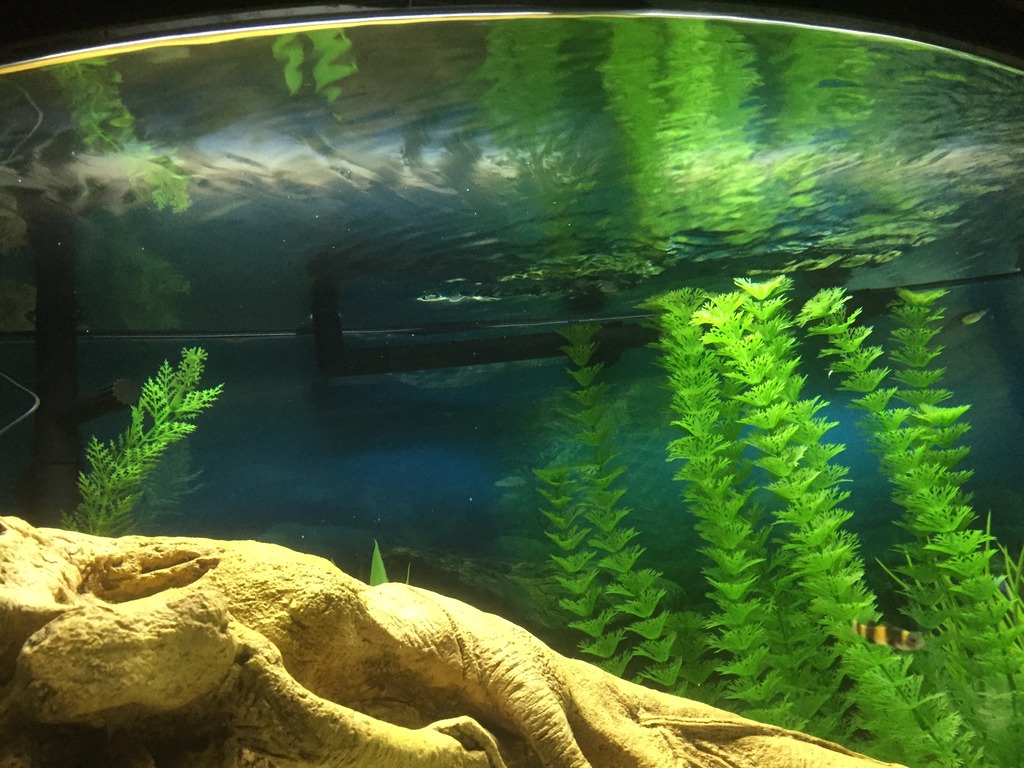
My second tank is a my freshwater community tank. It is a 37g bowfront as well that houses 1 Betta, 2 German Rams, 1 Molly, 1 Koi Angel, 2 Guppies, 2 Albino Plecos, 6 X-Ray Tetra, and a handful of Ghost Shrimp. No live plants.
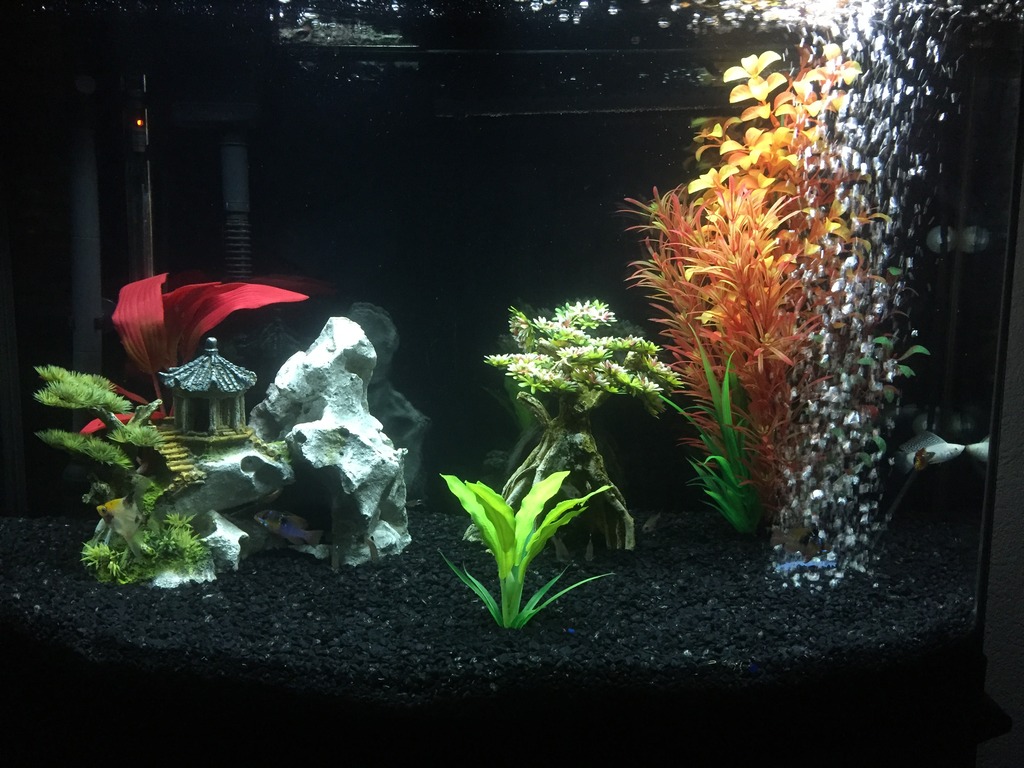
This tank is hooked up to an Aquatop 300 Canister Filter rated at 264gph. I also have an Aqueon Quietflow30 HOB rated at 200gph. A Fluval Q1 air pump powers a large air stone in the tank. A believe there is plenty of surface agitation in this tank between the output of the canister, the HOB, and the bubbles from the air stone. I was wondering if some extra circulation in the tank would help... mostly to keep waste from settling on the substrate so the filter can pick it up easier.
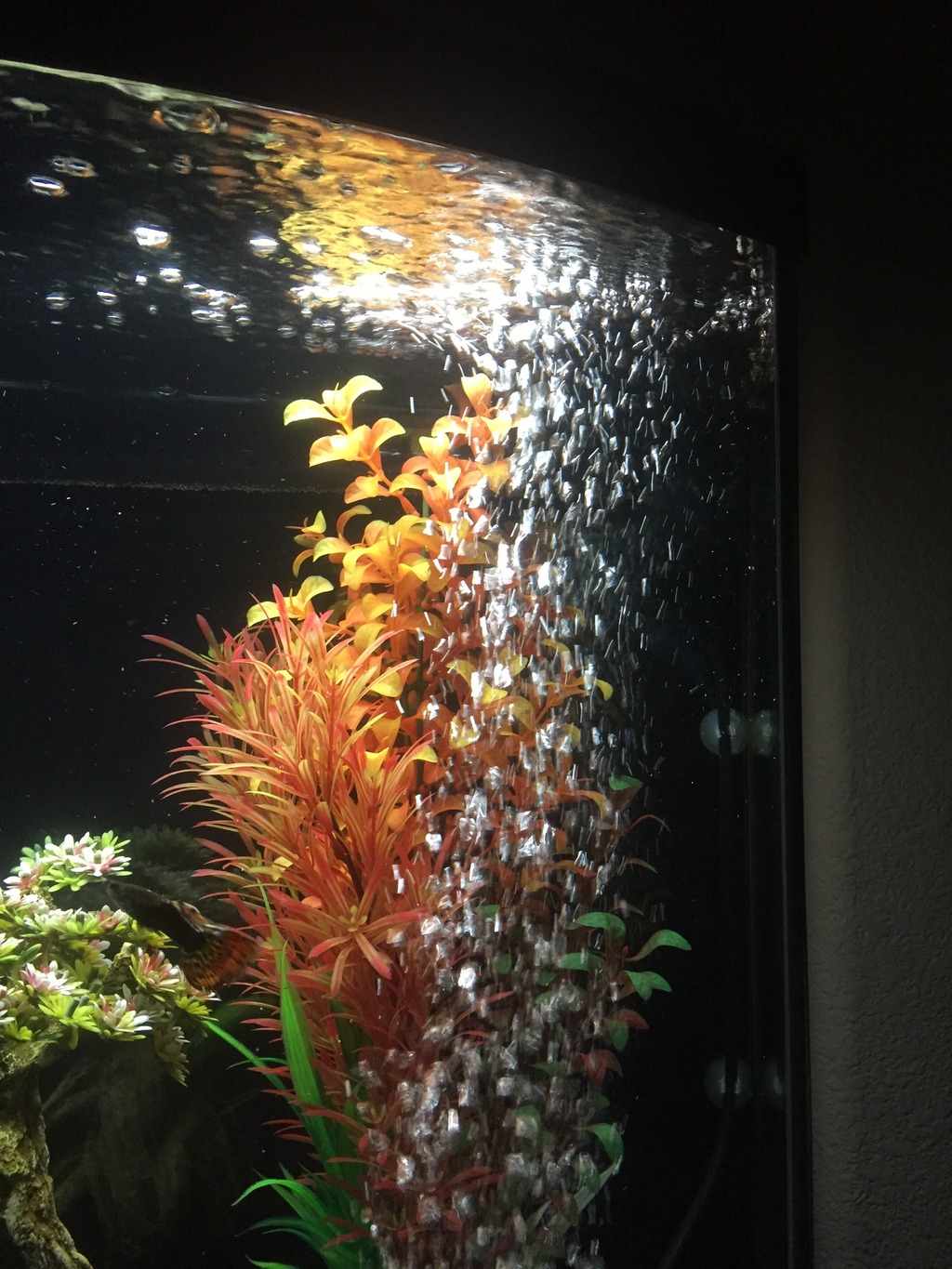
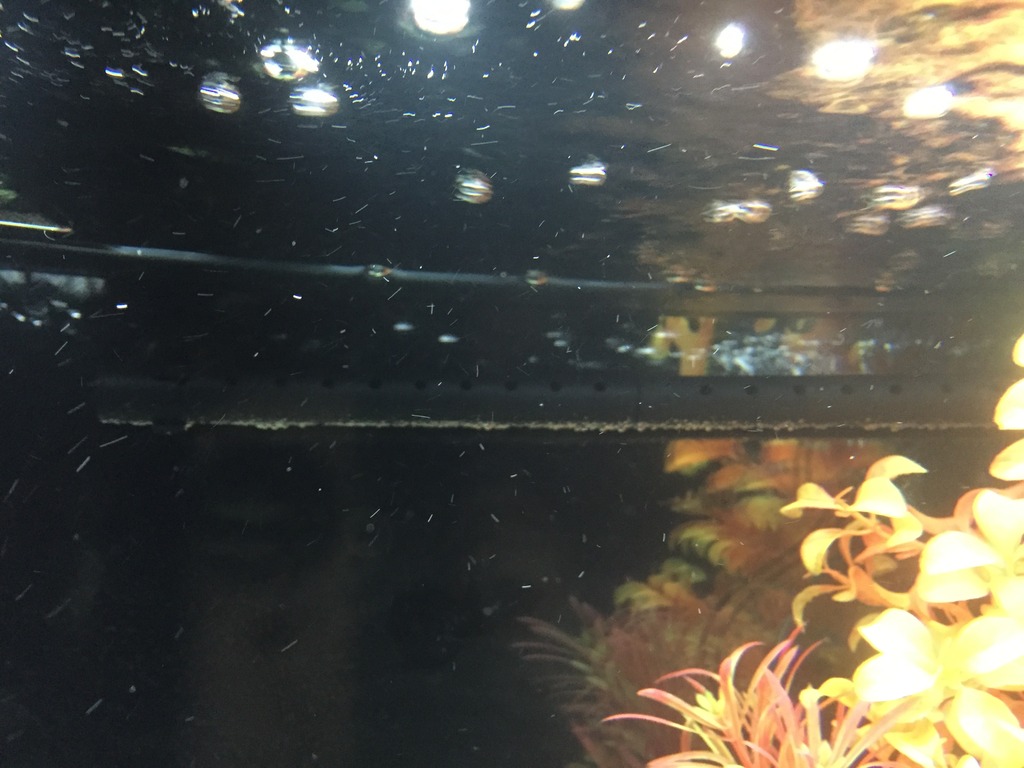
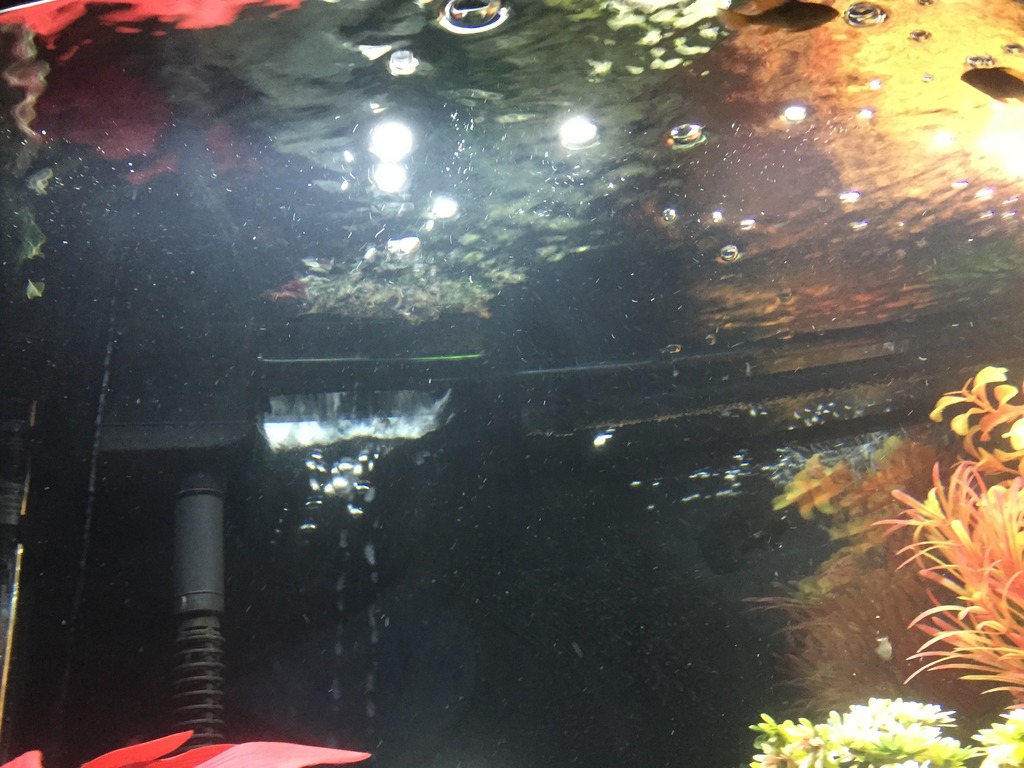
Please let me know what you guys think would be appropriate for each tank. Thanks
I was looking into adding some powerheads into both of my tanks and am looking for some advice. I am mostly uneducated when it comes to them; my basic understanding is that they can help add aeration and circulation to the tank, which is the reason I'm considering them. I could use some advice if they would be useful for my situation or if there's something better, and also what type/brand/power would be best.
The first tank is my brackish tank. It's a 37g bowfront that houses a Green Spotted Puffer and 10 bumblebee gobies. No live plants. It's currently freshwater but I'm slowly transitioning it to near full marine conditions.

I have it filtered with an Aquatop CF400UV Canister filter, which is rated at 370gph. I have both output valves pointed at the surface to produce surface agitation to pull oxygen into the tank. While the agitation is quite strong on one half of the tank the other half is pretty calm. So I'm concerned that possibly enough oxygen isn't being pulled in. I have no bubblers or other aeration system set up in this tank. I also worry that since both outputs are pointed towards the surface that the bottom portion of the tank is not getting circulation. I notice when I feed bloodworms they tend to just float straight to the substrate and sit there until their pecked off.

My second tank is a my freshwater community tank. It is a 37g bowfront as well that houses 1 Betta, 2 German Rams, 1 Molly, 1 Koi Angel, 2 Guppies, 2 Albino Plecos, 6 X-Ray Tetra, and a handful of Ghost Shrimp. No live plants.

This tank is hooked up to an Aquatop 300 Canister Filter rated at 264gph. I also have an Aqueon Quietflow30 HOB rated at 200gph. A Fluval Q1 air pump powers a large air stone in the tank. A believe there is plenty of surface agitation in this tank between the output of the canister, the HOB, and the bubbles from the air stone. I was wondering if some extra circulation in the tank would help... mostly to keep waste from settling on the substrate so the filter can pick it up easier.



Please let me know what you guys think would be appropriate for each tank. Thanks
Last edited:
